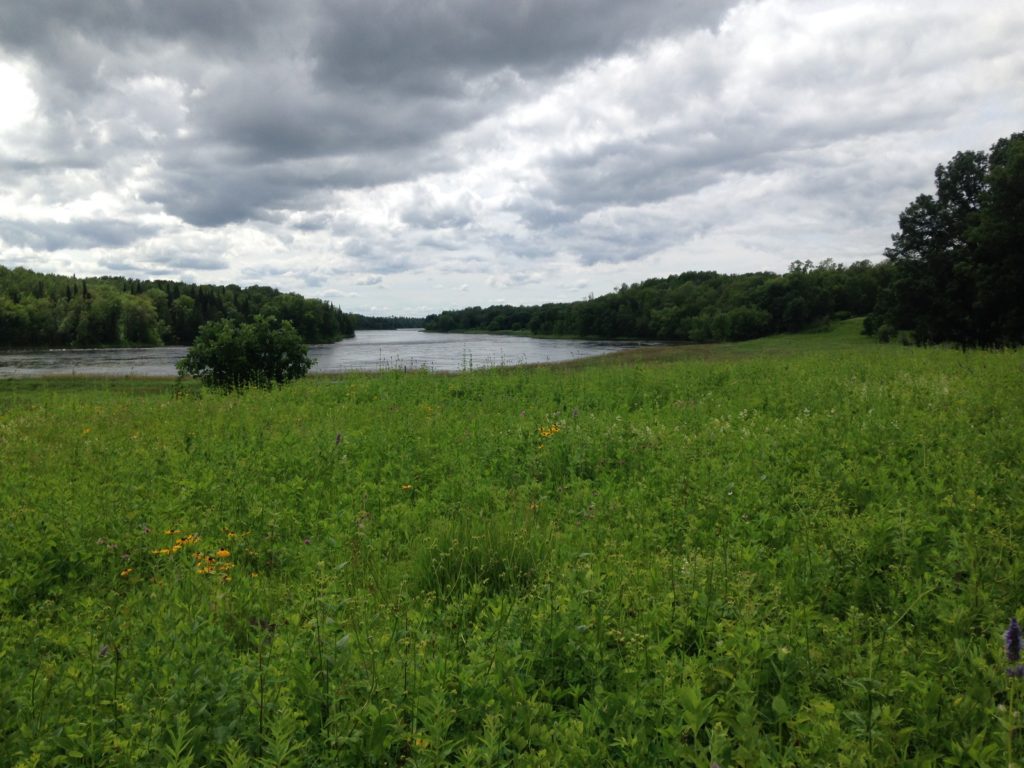Click on the “play” button to hear the diary episode read aloud, and click on the green tab 1 to learn more about a word or phrase.
Find Du Vernet on a map.
Thursday, July 20:
Raining hard all day. I helped Mr. Johnston 2 to mend his grindstone, and he told me a story about Tom Overcome 3 . (The Indian 4 I saw playing cards 5 in the tepee 6 .)
When Mr. Johnston first came here, he went into Tom Overcome’s house and Archdeacon Phair 7 asked Mr. Johnston to read the Bible and then to sing a hymn 8 . Mr. Johnston did not like to do this as it was not his custom 9 to sing unless he knew the Indians wished it.
After the archdeacon had talked a great deal (through Mr. Johnston as an interpreter), the Indian said: “You two men know a great deal. I am only a poor Indian. You have come into my house, read the book and sang and talked. Now supposing I should go into your house and beat my tom-tom 10 and dance my dance and go on in my ways. Now would you like it? Now that you have had your say here let me tell you never to enter my house again until I ask you.”
He afterwards did all he could to annoy Mr. Johnston, driving his sleigh with bells past the Church on Sunday morning to get wood, thus distracting the attention of the people. Mr. Johnston felt he must have a talk with him, though he did not want to enter his house until invited 11 .
One day, they met on the road. The Indian said he was busy. Mr. Johnston said “so am I,” but that he wanted to have a word with him. He said “You need not think you can annoy me by what you are doing. It makes no difference to me but in working on Sunday you are displeasing God, who alone can bless you and make you happy.” The Indian replied “That is only the white man’s way 12 ,” but Mr. Johnston talked on.
At last, the Indian said “You speak the truth: many a time I have cut my foot or my hand because I was working on Sunday.” Still, even after this, he did not come to Church although Mr. Johnston thought he had got nearer to the man. Some time later, hearing that Tom Overcome was going to take his wife and baby on a long journey in the winter to visit the American Indians 13 , Mr. Johnston felt so strongly the danger of this that he pleaded with the man not to go. He seemed to hesitate but his wife was anxious. They went. She died on the journey and the day after the babe starved to death.
When Tom returned he came and shook hands with Mr. Johnston and could scarcely speak. He said: “I often thought of your words to me, which were the truth.” And yet today Tom has never entered the Church; the medicine men 14 do all they can to keep him away.
Thursday afternoon about 4 p.m., as it seemed to be clearing, we sailed and paddled four miles down the river to the Boucherville 15 Post Office, and there I found my first letter. It rained as we were leaving for home so we had to wait a little while. We had hard enough work rowing back against both wind and current. The dark clouds and the light breaking through them was very fine. In the evening, we packed up.

